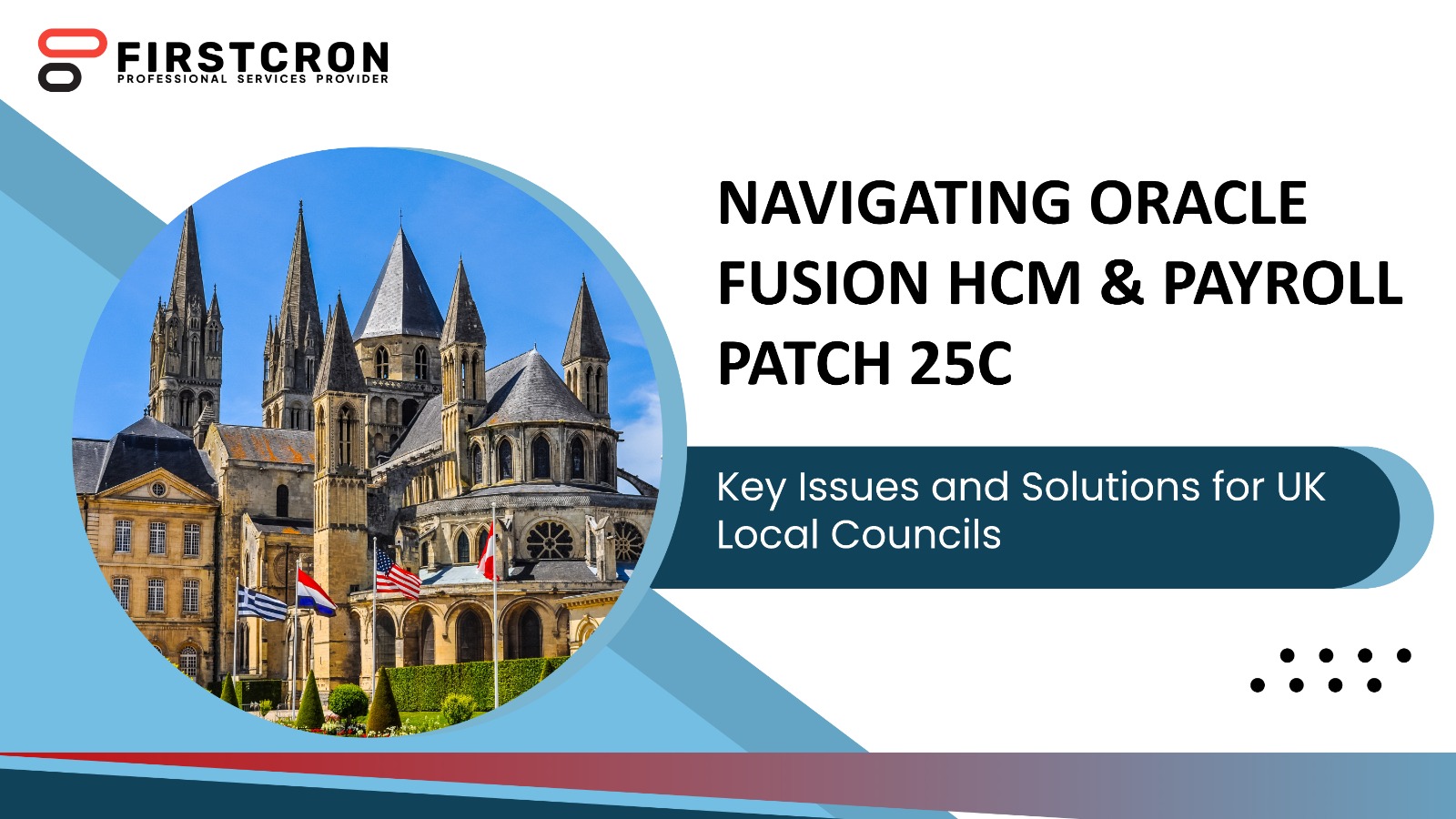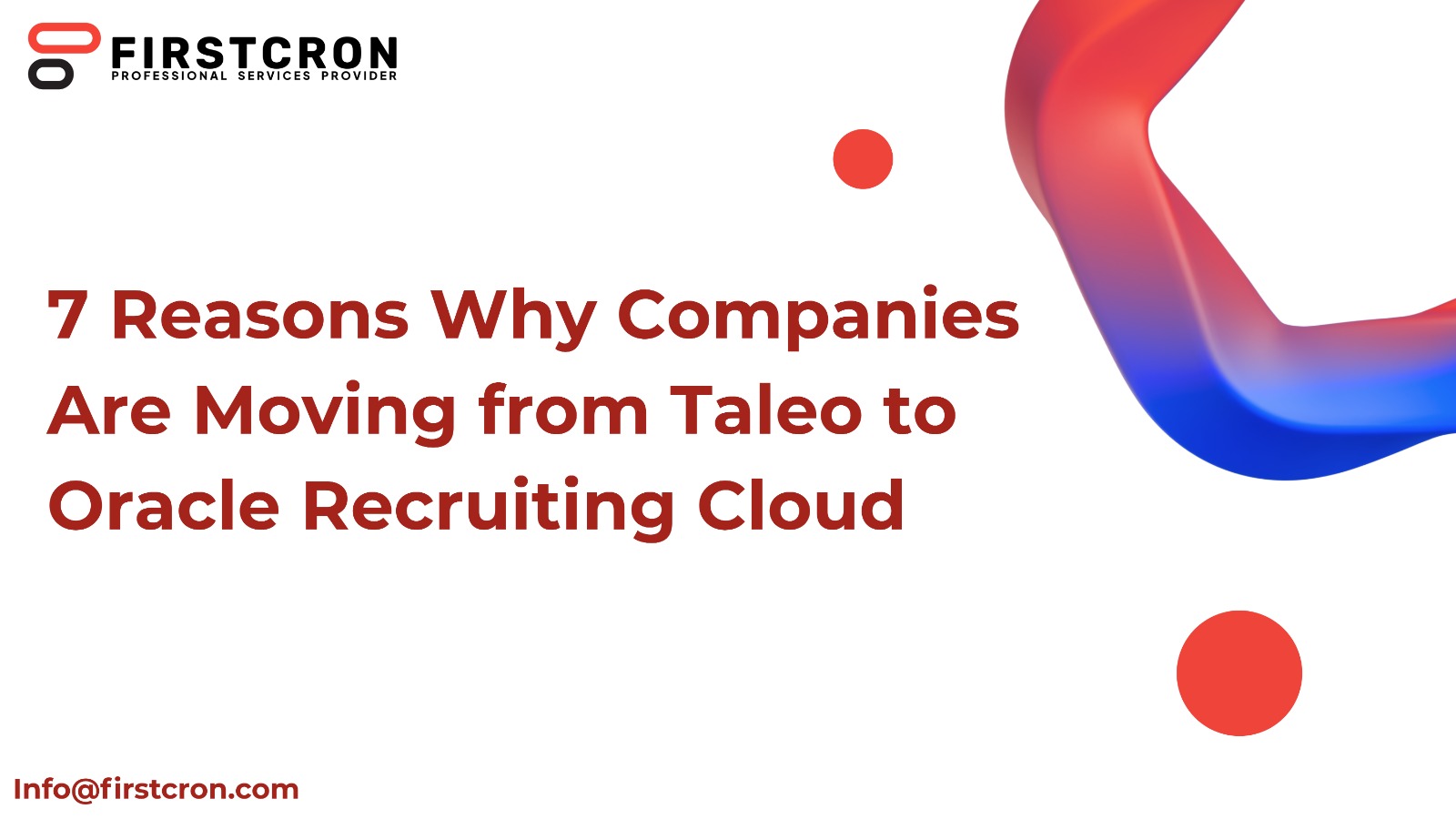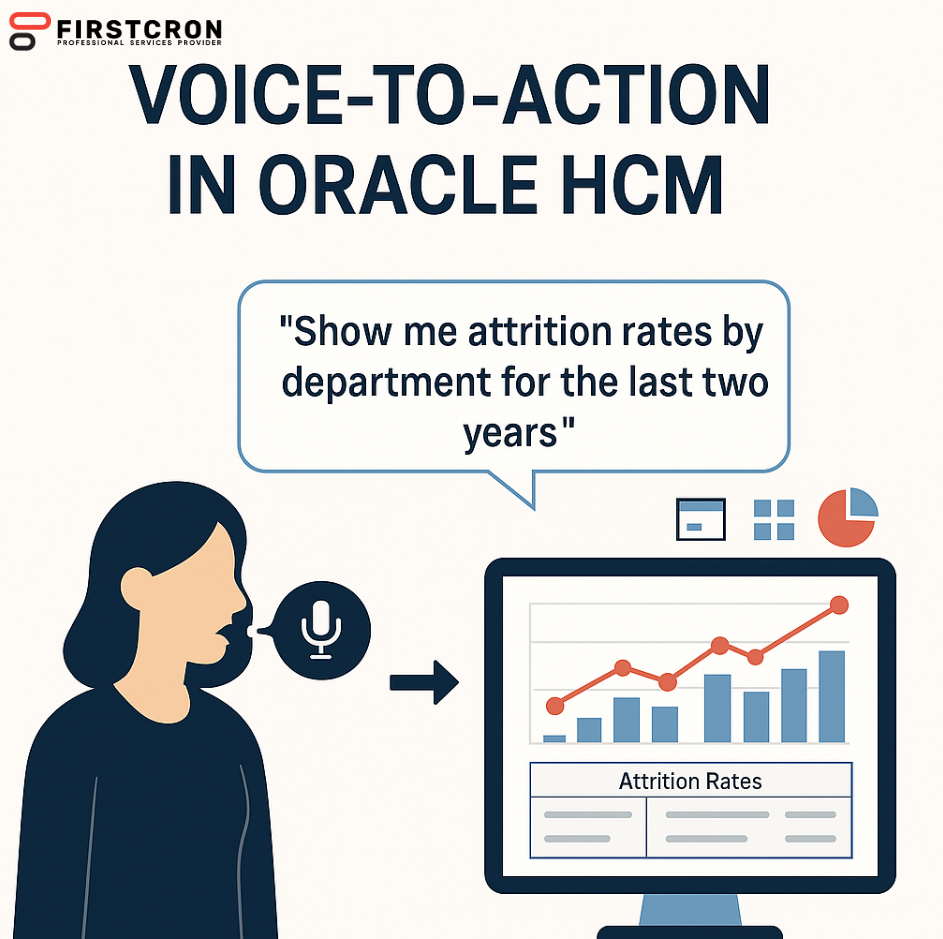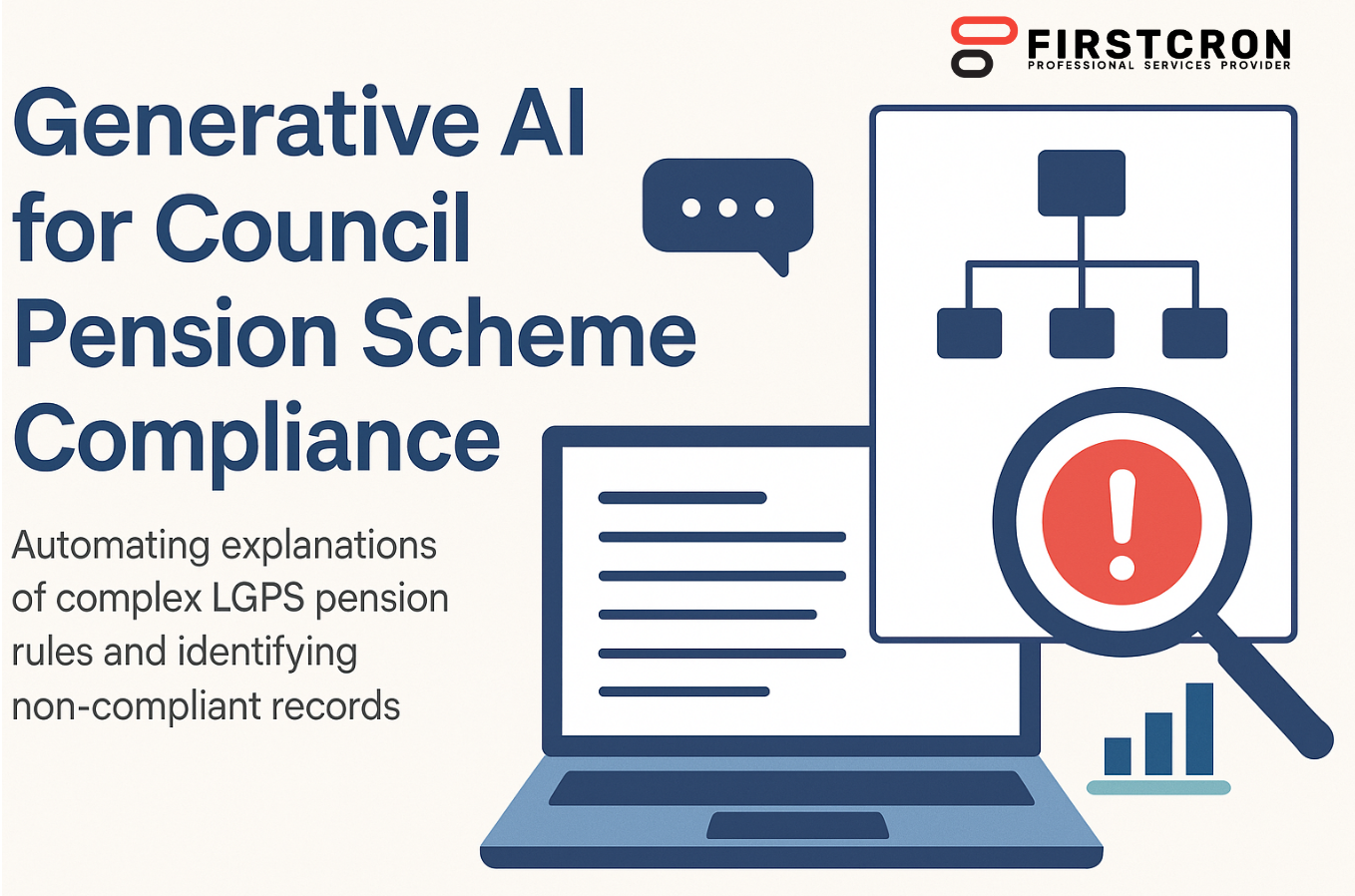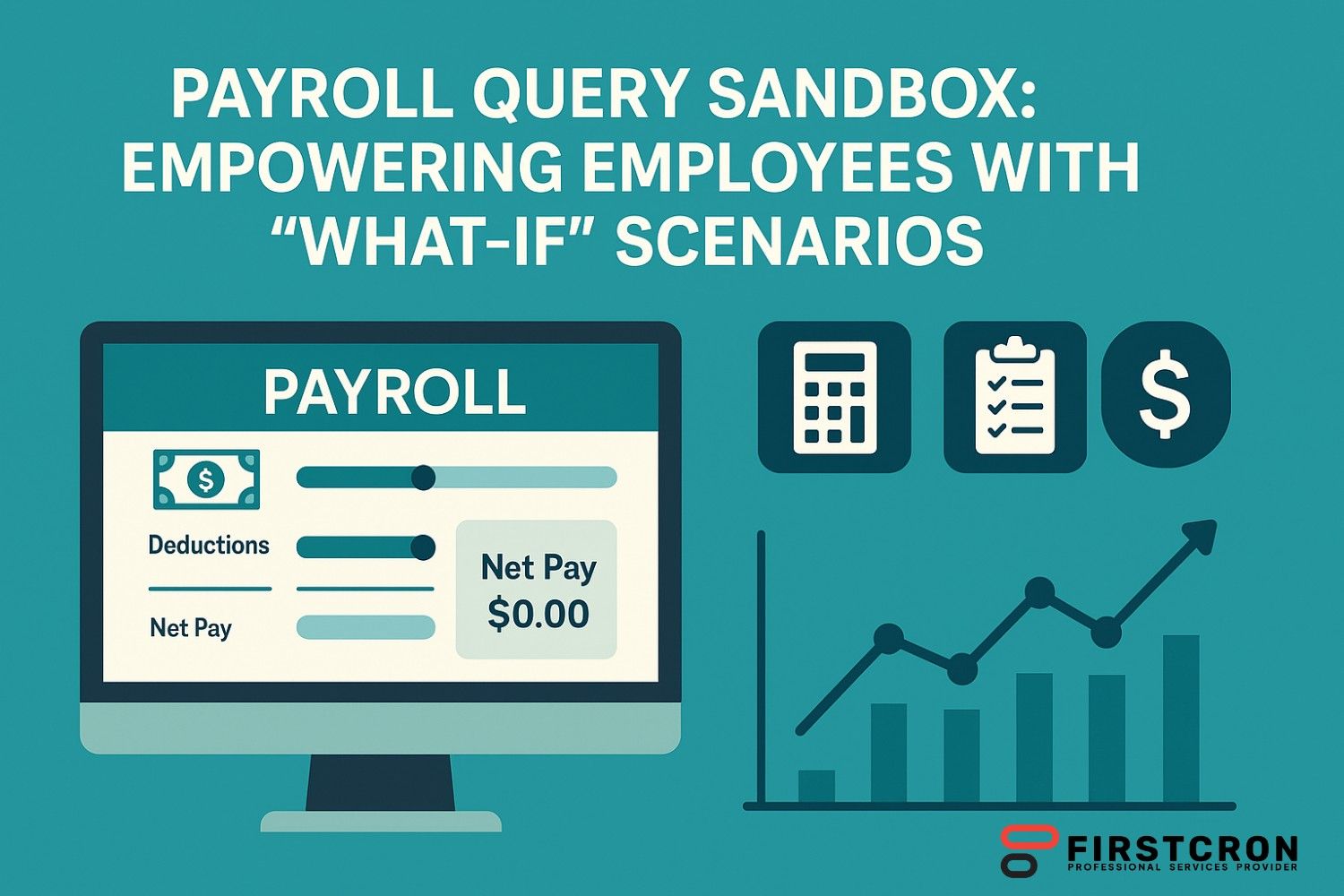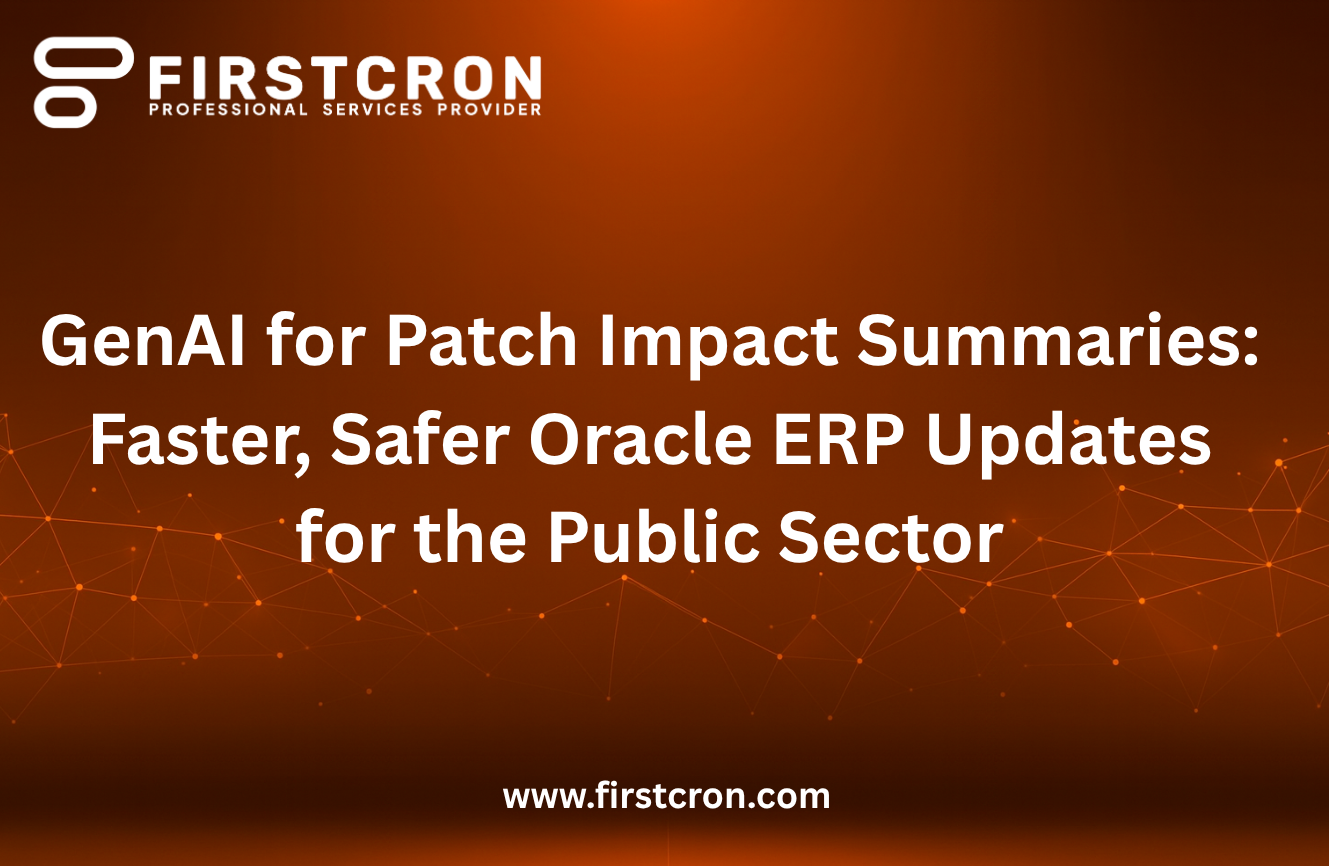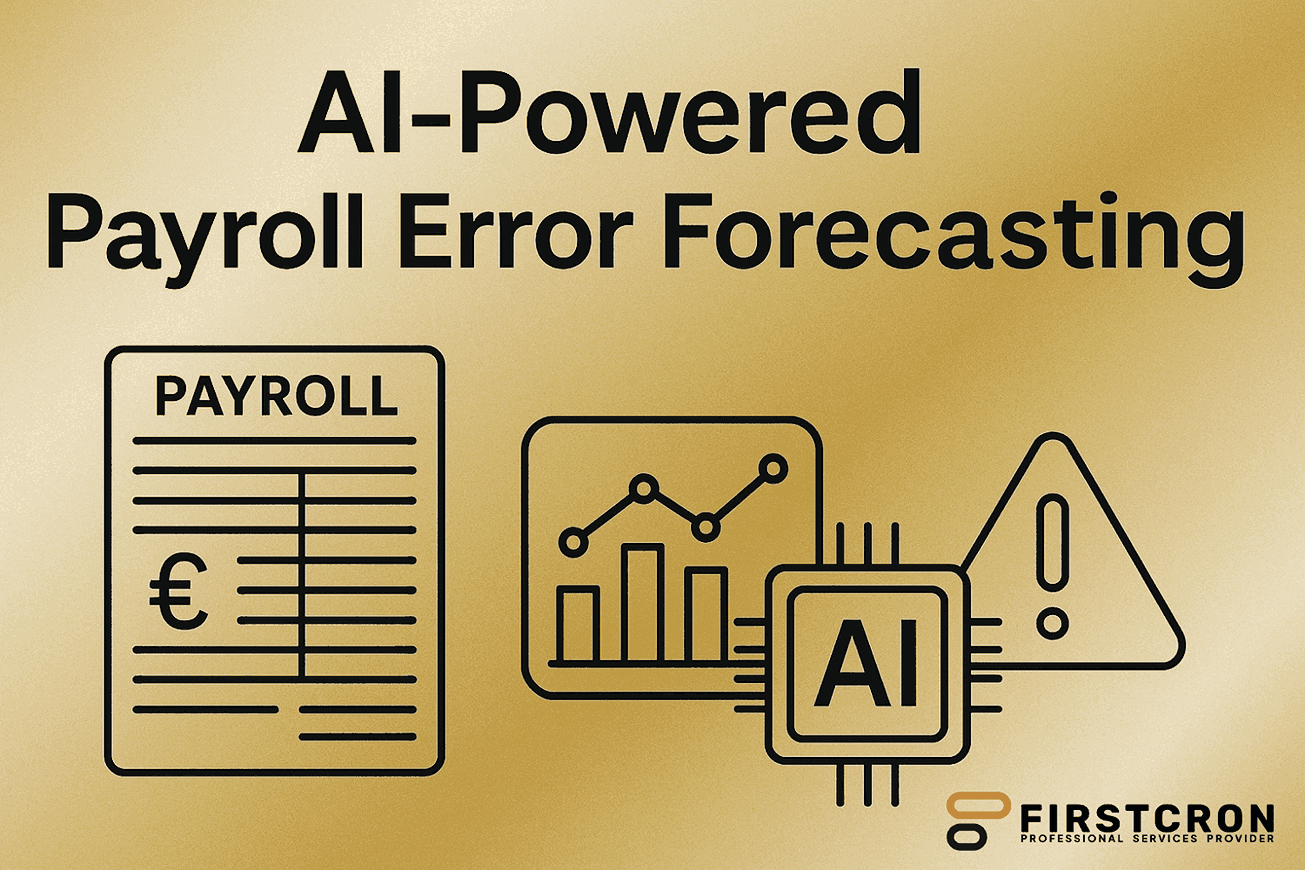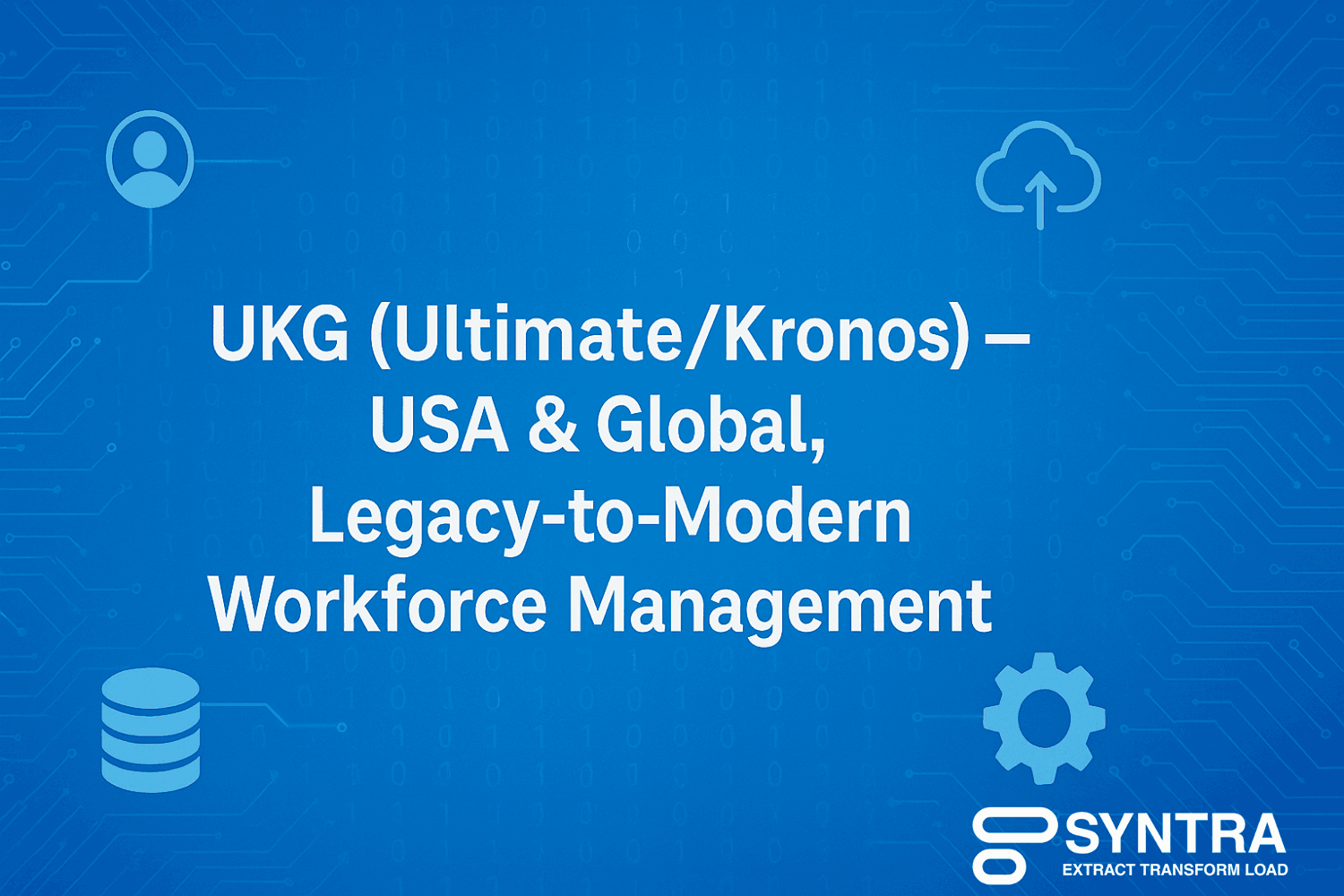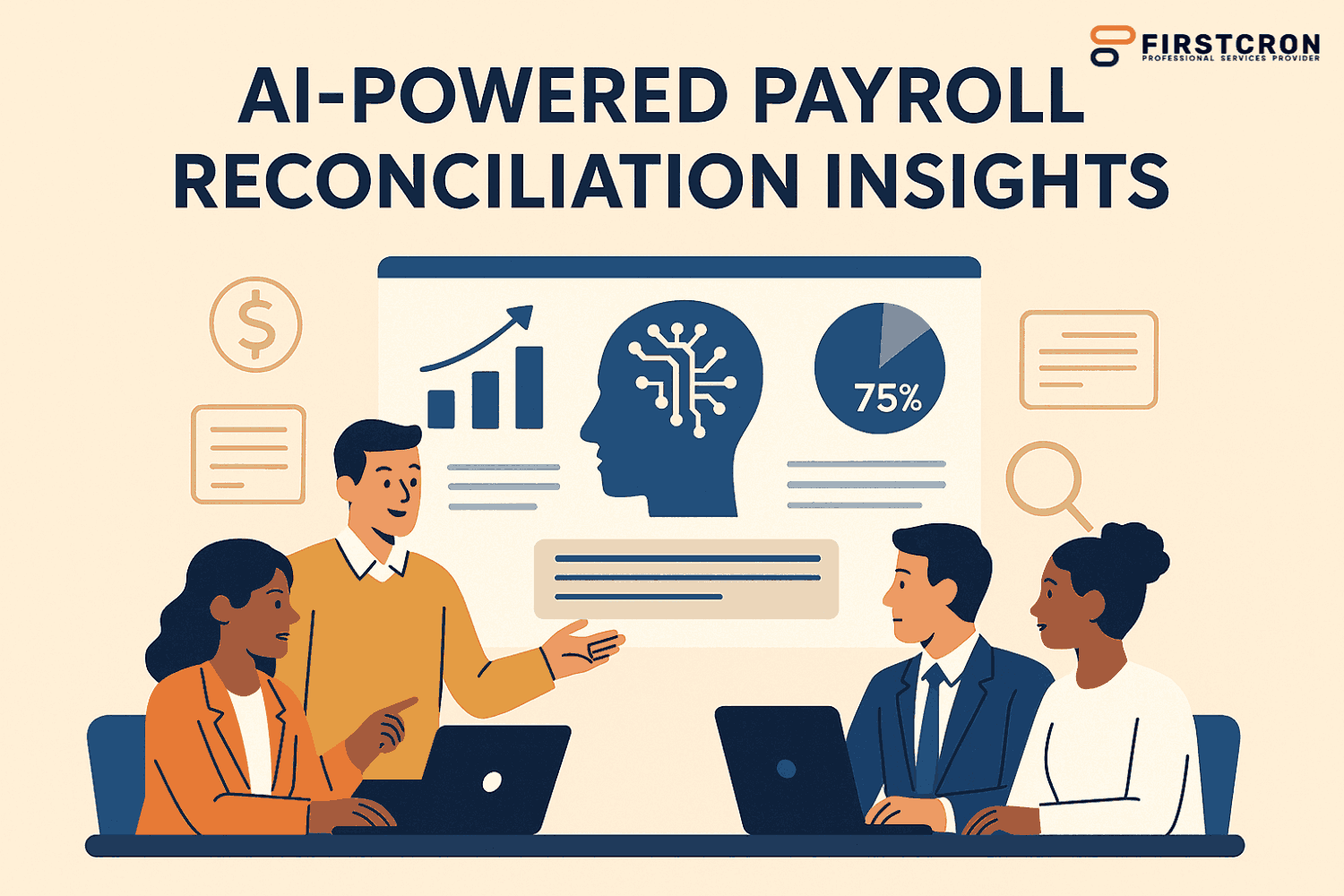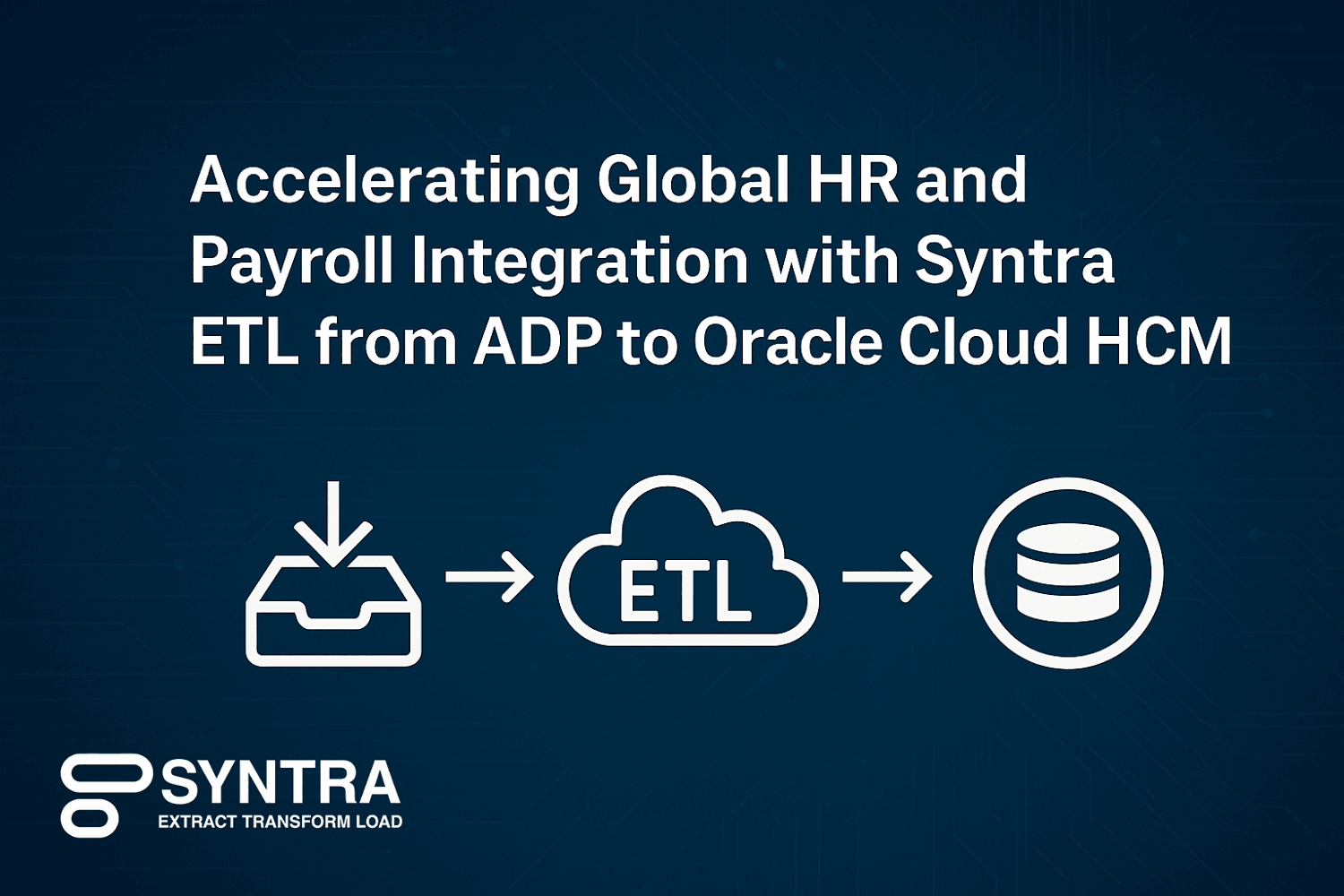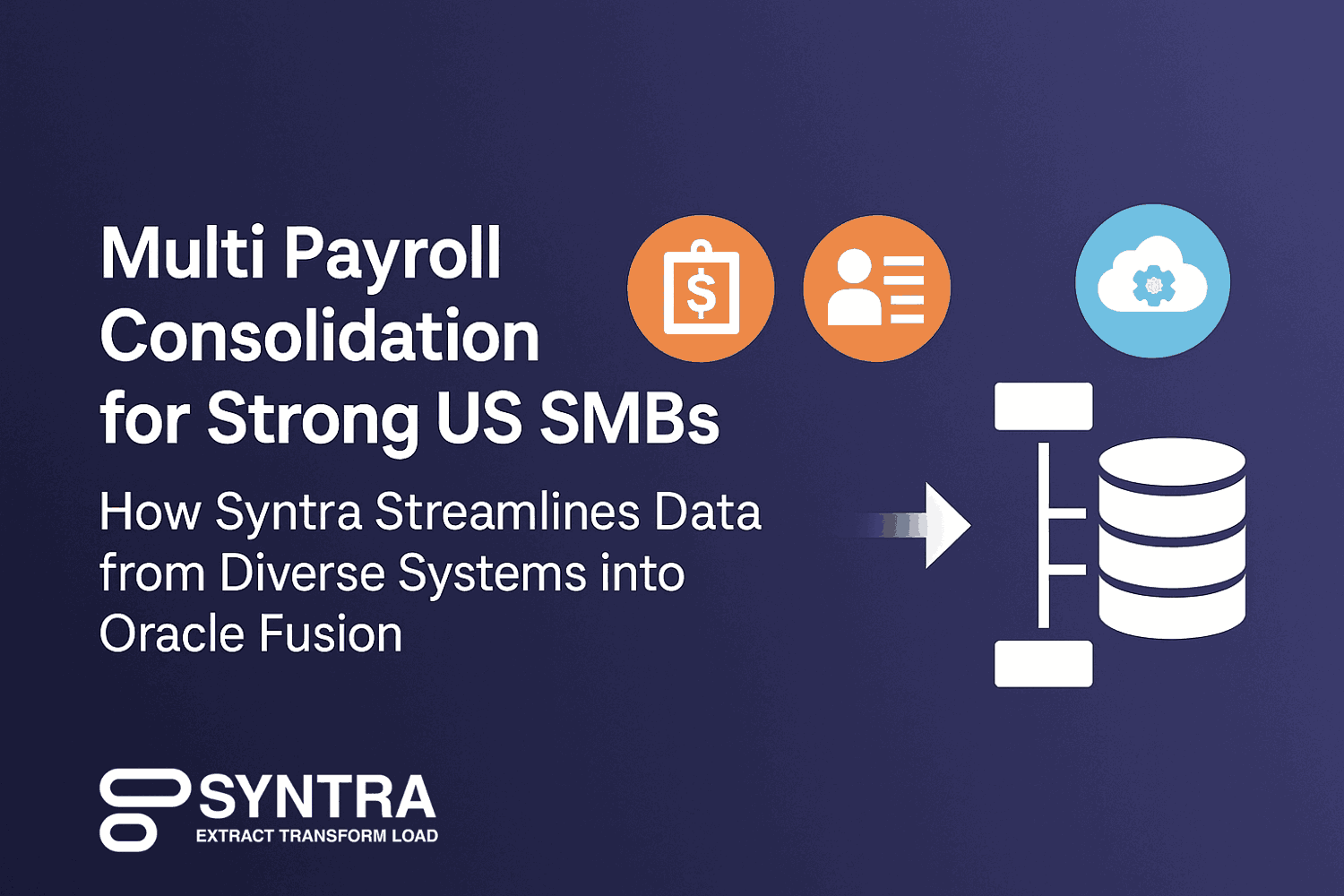
Strong US SMBs increasingly operate with a mix of payroll platforms rather than a single system. This is often the result of acquisitions, legacy decisions, regional operations, or departmental preferences. Paylocity, Paychex, Gusto, ADP, Paycom, and other solutions each serve distinct niches within the organization. While these systems may perform well individually, they create fragmentation when payroll data must be unified for finance, reporting, compliance, and workforce insight. Oracle Fusion and similar enterprise platforms are often the central destination for consolidated data, but moving payroll information from multiple systems into a single source of truth presents challenges. Syntra resolves this complexity by enabling Extract Transform Load capabilities built specifically to integrate diverse payroll platforms seamlessly with Oracle Fusion.
In this blog we’ll cover
- The Challenge Of Multiple Payroll Platforms
- Avoiding Data Mismatches And Rework
- Respecting Platform Strengths While Unifying Data
- Eliminating Manual Cleanup And Upload Failures
- Key Transformation Areas That Matter Most
- Scalability Without Disruption
- Scalability Without Disruption
- Better Financial Alignment And Reporting
- Compliance And Governance Benefits
- Employee Trust And Experience
- A Unified Path Forward
- A Unified Path Forward
- Conclusion
The Challenge Of Multiple Payroll Platforms
When SMBs manage multiple payroll systems, their HR and finance teams tend to rely on spreadsheets and manual reconciliation to keep information consistent across platforms. Differences in file formats, field names, deduction types, earning codes, and costing definitions complicate daily operations. Each payroll run multiplies the time spent merging reports, checking data alignment, and manually preparing files for upload. This repetitive effort often delays financial processes like labor costing, expense allocation, or budgeting. Syntra introduces an ETL framework that handles extraction from each payroll system, transforms the data into standardized formats, and loads it into Oracle Fusion without manual patchwork.
Avoiding Data Mismatches And Rework
Multi payroll environments also expose organizations to higher risks of data inconsistency. Even small discrepancies in employee status, compensation updates, or local tax rules can lead to payroll mismatches, reprocessing work, or improper costing in Oracle. By centralizing transformation rules and validation steps, Syntra ensures the information coming from Paylocity, Paychex, Gusto, or any other payroll system is reconciled and aligned before loading. This approach supports clean synchronization into Oracle Fusion and ensures the organization maintains a single, reliable source of truth.
Respecting Platform Strengths While Unifying Data
One of the keys to effective consolidation is respecting the operational strengths of each payroll system while unifying downstream data structures. Many SMBs select Paylocity for ease of onboarding and employee self service, Paychex for specialized compliance support, or Gusto for cost-effective payroll in smaller divisions. Syntra does not force organizations to abandon these choices. Instead, it creates an integration layer where extraction routines pull relevant data from each system. The transformation stage standardizes field formats, applies mapping logic, and resolves any structural differences. The loading process then delivers accurately structured data to Oracle Fusion, enabling consistent visibility across the business.
Eliminating Manual Cleanup And Upload Failures
Without a unified ETL solution, consolidation efforts strain both HR and finance teams. Payroll administrators must correct formatting errors, handle missing fields, and manually fix discrepancies before sending files to Oracle. If a single field is misaligned or a code is not mapped correctly, the entire upload may fail. Syntra eliminates these problems by allowing teams to define transformation rules once and apply them to every payroll source going forward. This drastically reduces time spent on cleanup and improves the cadence of payroll cycles.
Key Transformation Areas That Matter Most
To achieve reliable consolidation, SMBs often need to focus on the highest impact data categories across their payroll platforms:
- Payroll cycle and frequency definitions that must match Oracle Fusion calendars
- Year to date balances and retro adjustments that require harmonization before loading
- Costing information such as cost centers and GL segments that impact financial reporting
- Tax data for federal, state, and local jurisdictions, including withholding definitions and formats
- Deductions and benefits where codes vary across platforms and must be translated for unified reporting
- Compensation and earnings details such as wages, bonuses, overtime, and differentials requiring mapping into Oracle element structures
- Job, position, and department information that must align with Oracle Fusion work structures
- Employee identifiers, names, addresses, and employment status fields that must be consistent across systems
These transformation areas represent the most common bottlenecks in multi payroll consolidation. Without a structured approach, teams spend hours reformatting data from each platform every cycle. Syntra captures the differences once and enforces standardized output with consistency, ensuring Oracle Fusion receives complete, correct data regardless of the payroll source.
Scalability Without Disruption
Another major advantage is that Syntra supports progressive scaling. As SMBs grow or incorporate new business units, the number of payroll systems can increase or evolve. Instead of redesigning the integration each time, the organization updates or adds transformation rules within Syntra. This turns expansion into a manageable task rather than a disruption. As new payroll files are extracted, the ETL logic ensures they align with Oracle Fusion requirements automatically.
Scalability Without Disruption
Another major advantage is that Syntra supports progressive scaling. As SMBs grow or incorporate new business units, the number of payroll systems can increase or evolve. Instead of redesigning the integration each time, the organization updates or adds transformation rules within Syntra. This turns expansion into a manageable task rather than a disruption. As new payroll files are extracted, the ETL logic ensures they align with Oracle Fusion requirements automatically.
Better Financial Alignment And Reporting
Finance teams benefit as well because accurate data enters Oracle Fusion on schedule. This supports payroll costing, budget tracking, and analytics without manual intervention. When payroll data arrives clean and timely, financial close processes accelerate. Labor expense forecasting becomes more reliable. Strategic decisions benefit from real time workforce insight instead of waiting for reconciled spreadsheets.
Compliance And Governance Benefits
Compliance also improves when consolidation is handled through Syntra. Multi payroll environments often involve different state rules, tax jurisdictions, and benefit structures. Incorrect mapping can lead to reporting errors or penalties. Syntra validates data in the transformation stage, ensuring fields and formats meet Oracle Fusion expectations and regulatory requirements. This reduces the risk of unexpected reprocessing or audit findings.
Employee Trust And Experience
The quality of integration also affects employee confidence. When multiple systems feed payroll, employees may experience discrepancies in earnings statements, deductions, or tax reporting if data does not consolidate correctly. A unified ETL workflow provides consistency so employees see accurate results regardless of the system used to process their payroll. This builds trust and reduces help desk traffic.
A Unified Path Forward
Executives and business owners value the control that Syntra brings to multi payroll ecosystems. Instead of relying on ad hoc uploads or expensive custom integrations, organizations implement a repeatable flow that can adjust as the business evolves. They gain a single view of workforce costs and payroll data across all systems without sacrificing flexibility. The ability to standardize and automate data movement allows them to retain the payroll platforms that serve them best while still centralizing in Oracle Fusion.
A Unified Path Forward
Executives and business owners value the control that Syntra brings to multi payroll ecosystems. Instead of relying on ad hoc uploads or expensive custom integrations, organizations implement a repeatable flow that can adjust as the business evolves. They gain a single view of workforce costs and payroll data across all systems without sacrificing flexibility. The ability to standardize and automate data movement allows them to retain the payroll platforms that serve them best while still centralizing in Oracle Fusion.
Conclusion
Multi payroll environments are common among strong US SMBs, but they do not have to create integration headaches. Whether a business uses Paylocity, Paychex, Gusto, or multiple platforms at once, the need for a clean, automated path into Oracle Fusion remains the same. Syntra provides the extract, transform, and load capabilities that streamline multi payroll consolidation without introducing complexity. By standardizing data from diverse systems and loading it reliably into a single enterprise platform, Syntra ensures payroll accuracy, operational efficiency, and financial clarity. The result is a scalable approach that keeps payroll flexible while keeping data unified and enterprise ready.
Tags
Related Post
Navigating Oracle Fusion HCM & Payroll Patch 25C: Key Issues And Solutions For UK Local Councils
July 26th, 2025 10 min read
Navigating Oracle Fusion HCM & Payroll Patch 25A: Key Considerations For UK Local Councils
July 27th, 2025 10 min read
7 Proven Oracle Fusion Testing Principles To Guarantee Defect-Free Cloud Deployments
May 16th, 2025 15 min read
7 Reasons Why Companies Are Moving From Taleo To Oracle Recruiting Cloud
June 2nd, 2025 14 min read
How End-to-End Testing Of Oracle Fusion Enhances Operational Efficiency In Banking
May 23rd, 2025 11 min read
5 Business Benefits Of Investing In AI-Powered Performance Oracle Fusion Testing
May 5th, 2025 11 min read
WEEKEND READS
Voice-to-Action In Oracle HCM: Transforming HR Queries Into Intelligent Actions With GenAI
September 5th, 2025 23 min read
Automating Payslip Anomaly Detection With Natural Language Insights In Oracle ERP For The Public Sector
August 27th, 2025 24 min read
Successful Data Migration Completed — Now Live On Oracle Fusion
August 12th, 2025 4 min read
Generative AI For Council Pension Scheme Compliance
September 6th, 2025 18 min read
Payroll Query Sandbox: Empowering Employees With “What-If” Scenarios
September 17th, 2025 22 min read
GenAI For Patch Impact Summaries: Faster, Safer Oracle ERP Updates For The Public Sector
August 28th, 2025 32 min read
AI-Powered Payroll Error Forecasting
September 26th, 2025 20 min read
UKG (Ultimate/Kronos) — USA And Global, Legacy-to-Modern Workforce Management
October 5th, 2025 23 min read
AI-Powered Payroll Reconciliation Insights: Explaining Variances In Plain English
September 27th, 2025 25 min read
Accelerating Global HR And Payroll Integration With Syntra ETL From ADP To Oracle Cloud HCM
October 1st, 2025 17 min read






